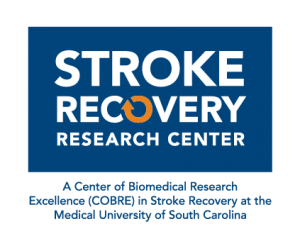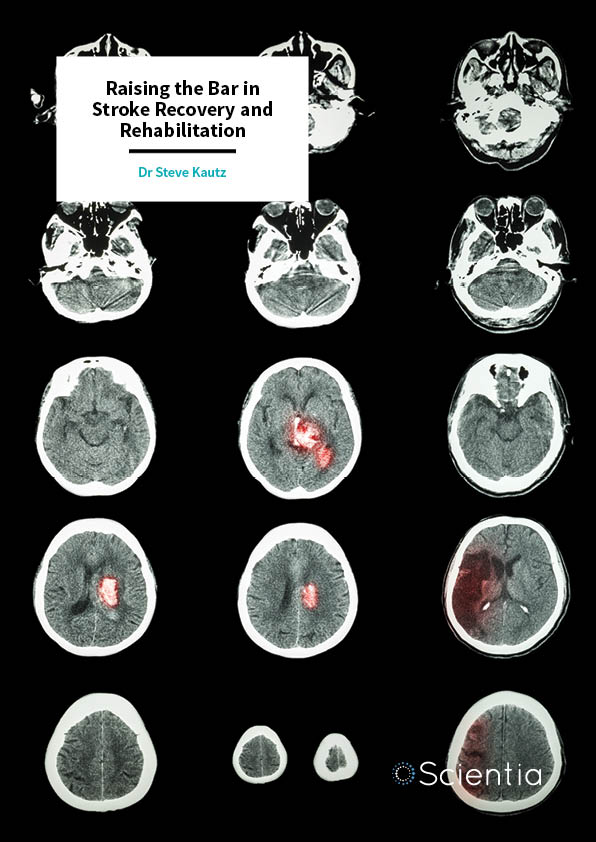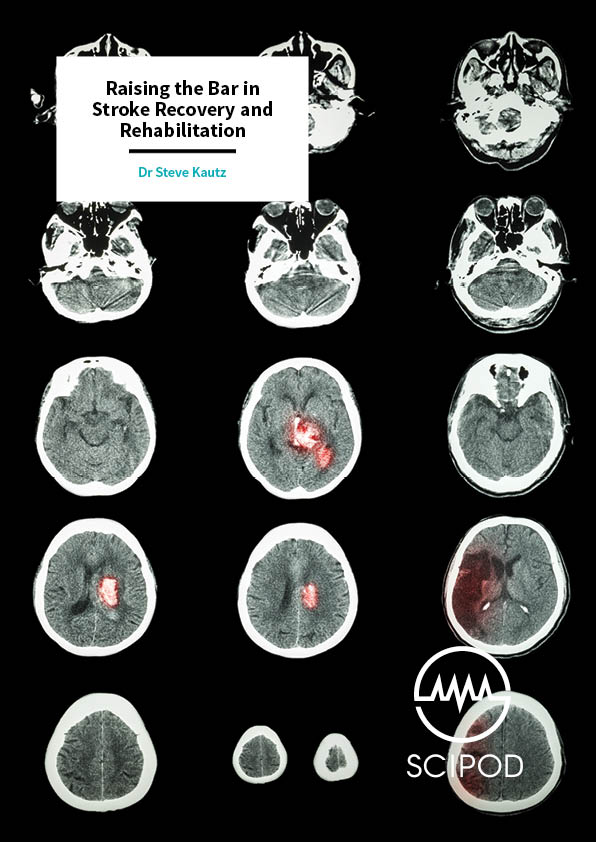COBRE – Raising the Bar in Stroke Recovery and Rehabilitation
Despite the high number of stroke survivors worldwide, research to help those with chronic disabilities after stroke has long been underemphasised. The Medical University of South Carolina’s Center for Biomedical Research Excellence (COBRE) in Stroke Recovery aims to address this shortfall and improve the treatment and long-term quality of life for stroke survivors.
Challenges in Stroke Research
Stroke is one of the most debilitating conditions in the United States, yet treatment options are limited. There are estimated to be seven million stroke survivors living in the country, with stroke survivors in the state of South Carolina representing one in 50 of the nation’s total number of stroke cases. Each year, expenses for stroke-related hospitalisation and rehabilitation exceed $1 billion in South Carolina alone.
The state is situated in the ‘stroke belt’, a region of the US with a 50% higher stroke mortality rate than the rest of the country. Survivors in South Carolina are also younger than the national average for onset of stroke and take longer to recover. This is particularly pertinent for South Carolina’s African-American population. Consequently, it is not surprising that stroke recovery is a huge public health issue within the state.
Despite major improvements in stroke prevention and acute treatment, little progress has been made in enhancing recovery. It is expected that three-quarters of stroke survivors will have some long-term disability and less than half will regain full hand or arm function, and/or the ability to walk unaided.
Researchers and clinicians at the Medical University of South Carolina (MUSC) have taken an innovative approach to tackling this devastating problem by establishing a new stroke-specific Center of Biomedical Research Excellence (COBRE) in Stroke Recovery. MUSC is funded and supported in this endeavour by the National Institute of Health’s (NIH) COBRE award – an initiative supported by the NIH’s Institutional Development Award (IDeA) program put in place to promote, augment and strengthen the research capabilities of institutes in IDeA states focused on biomedical research.
‘We want to expand the measurement and intervention toolbox of clinicians treating those with post-stroke deficits to improve their outcomes. The potential for the center to assume a national leadership role in recovery from stroke is immense.’
The COBRE in Stroke Recovery also benefits from a strong partnership with the adjacent Ralph H. Johnson VA Medical Center, as a number of investigators hold joint MUSC-VA appointments and many of the laboratories are officially recognised as shared space through a memorandum of understanding. With NIH and institutional support, the COBRE in Stroke Recovery aims to expand research infrastructure and capacity at MUSC to enable outstanding, multidisciplinary, collaborative research in stroke recovery.
In short, the center plans to improve the treatment and long-term quality of life for stroke survivors, using cutting-edge technology and an interdisciplinary approach to understand how the brain repairs itself post-stroke and to enhance rehabilitation and patient outcomes. ‘The primary focus of the COBRE in Stroke Recovery is on developing and testing interventions to rehabilitate individuals with post-stroke impairments and disabilities,’ says Dr Steve Kautz, COBRE in Stroke Recovery Program Director and Principal Investigator, Chair of the Department of Health Sciences and Research in the College of Health Professions at MUSC and a Research Career Scientist at Charleston’s Ralph H. Johnson VA Medical Center.
A Shared Focus on Stroke Recovery
Most stroke research focuses on the preservation of nervous system structure and function within the hours after a stroke. While an eminently worthy cause that has saved lives and reduced disability, more than half of stroke survivors still have persistent disability. As such, a greater understanding of how the nervous system repairs and reorganises neural circuitry in the days, months and years following a stroke, and how the ability of neurons to change in form and function – neural plasticity – can be enhanced to maximise recovery during rehabilitation, is needed.

Under the leadership of Dr Kautz, MUSC’s COBRE in Stroke Recovery brings together an exciting team of clinicians and science researchers with expertise in an array of health disciplines. Together, they are tasked with developing core resources that will deliver an impressive number of outcomes, including the mentoring of skilled junior scientists – neurologists, physical therapists, translational scientists and basic scientists – the empowerment of senior researchers, and an opportunity to fast-track the most promising multidisciplinary research from the lab to the patient. By merging their varying experience and strengths, the team is working together to develop unprecedented recovery-based interventions for individuals with post-stroke disabilities that they hope will alter the landscape of stroke rehabilitation.
In addition to a hugely talented, multidisciplinary team, the center boasts access to a myriad of pioneering technologies and a rich assortment of equipment. While some institutions offer similarly advanced laboratories in specific disciplines, the COBRE is relatively unique in offering faculty turnkey access to a wide range of such advanced technology and expertise in multiple disciplines in an integrated manner. The center’s resources are split into four main scientific cores – each designed to support and advance stroke recovery research in animal and human studies.
The Quantitative Behavioral Assessment and Rehabilitation Core (QBAR) aims to identify the patients’ impairments and apply cutting-edge rehabilitation principles. Using high-tech, state-of-the-art equipment and expertise derived from motor and cognitive behavioural recovery measures in animal studies, the core is developing novel tools to help measure and quantify the impact of stroke on different aspects of patient behaviour and movement, such as walking and reaching. Additionally, access to rehabilitation tools and expertise is key as studies that aim to enhance the plasticity of the nervous system need to ‘teach’ the nervous system the new or refined skills enabled by the enhanced plasticity.
The Brain Stimulation Core (BSTIM) leverages skills and resources in MUSC’s Brain Stimulation Laboratory to focus primarily on brain stimulation techniques to measure brain function and to manipulate brain plasticity and or circuitry in treatments. The core provides COBRE investigators with the expertise to develop unique tools and methods to induce brain changes that can potentially treat the damage caused by a stroke.
The Neuroimaging Core (NI) takes advantage of expertise and resources within MUSC’s Center for Biomedical Imaging to explore multiple modes of structural and functional imaging relevant to stroke recovery. This will enable the team to research specific patient deficits that arise due to specific damage that arises following a stroke and generate strategies to help stroke survivors have a better response to treatment.
The Clinical and Translational Tools and Resources Core (CTTR) provides access to the tools and resources necessary for innovative research with human subjects. By harnessing the power of biomedical informatics and biostatistics, the core is developing the Stroke Recovery Comprehensive Multidisciplinary Database, a unique research tool and information clearinghouse for demographic, behavioural, neurophysiological, imaging, and clinical data from a large, diverse pool of post-stroke individuals.
As well as being a valuable, searchable pool of stroke recovery information, the data collected from all of the center’s activities in the Stroke Recovery Comprehensive Multidisciplinary Database will allow the significant advancement of individualised stroke interventions. ‘We are excited by the potential for the quantitative multidisciplinary data our center collects to form a unique database that will aid the transition to a future where rehabilitation can be much more personalised to specific deficits in individual patients,’ says Dr Kautz.

Developing a Sustainable, Competitive Infrastructure
The long-term plan of MUSC is the development of an independent, sustainable, multidisciplinary stroke recovery research program within the framework of the three-phase COBRE program. Currently, the center is beginning its fifth year of funding within a five-year Phase I period and the remainder of Phase I and all of Phase II will present many opportunities to move the COBRE towards the desired goal.
‘The next step for our center is to continue to grow our capabilities to conduct cutting-edge stroke rehabilitation research by better understanding brain plasticity. We will continue to push to discover new ways to use the tools of neuromodulation to aid the recovery process through exploiting the brain plasticity that underlies return of function,’ explains Dr Kautz.
While COBRE Phase I has been highly successful, the team believes the coming years will be even more productive as more of the Phase I investments reach the point of generating outcomes. There have been an impressive number of achievements to date. For example, all five Phase I junior investigators have now become independent researchers or Principal Investigators and the recipients of a variety of highly sought-after awards and grants.
Importantly, there has also been exceptional growth in research funding, with the number of Principal Investigators with stroke recovery funding nearly tripling since the start of the initiative. MUSC has grown annual funding for stroke recovery research from $2.1 million at the time of the COBRE award to $10.4 to date, in year five, with the possibility of additional funding before the year’s end. There has also been a substantial increase in stroke recovery publications and presentations. Phase I investments have also greatly increased the diversity of disciplines represented at the center to make it extremely multidisciplinary.
The center is also involved in a growing number of clinical trials and currently supports 30 studies investigating stroke recovery processes specific to walking, balance and strength training, arm and hand function, voice and swallowing disorders, depression, visual neglect and sensation. Using an Evaluation Program, part of the administrative infrastructure of the center, it has been able to continually improve the recruitment of patients into these studies.
Notably, COBRE personnel participate in the regional coordinating center for StrokeNet, the National Institutes of Health Stroke Trials Network program at MUSC and facilitated participating in the Telerehab-trial, an NIH funded stroke study investigating the efficacy of in-person versus telerehabilitation. In another notable success, the American Heart Association is funding the WISSDOM study – a four-part study focusing on reducing stroke recovery disparities in African-Americans – led by COBRE Associate Director Dr Robert Adams.
Recognition of the uniqueness of resources gathered by the center was demonstrated by award of the National Center of Neuromodulation for Rehabilitation, one of six NIH-funded (led by NCMRR in NICHD, NIBIB and NINDS) infrastructure grants to make unique resources available to the national rehabilitation research community. The NM4R center makes the training and resources developed in the COBRE BSTIM core available nationwide and puts COBRE investigators in the forefront of the field of neuromodulation – the alteration of brain activity through targeted delivery of a stimulus, such as electrical stimulation – in stroke recovery and rehabilitation in general.
Overall, MUSC’s Stroke Recovery Research Center offers world-class core resources and facilities and integrates the best work being conducted in the field. Furthermore, it has a COBRE infrastructure that makes MUSC highly competitive against other national stroke recovery research centers. The strategic goals developed and achieved in the Phase I period are crucial for Phase II planning, and Dr Kautz and his team have ambitious plans to strengthen the capabilities of the center during the five-year Phase II period. ‘We want to expand the measurement and intervention toolbox of clinicians treating those with post-stroke deficits to improve their outcomes. The potential for the center to assume a national leadership role in recovery from stroke is immense if we can strengthen the center by building on our current momentum.’
Meet the team
Dr Steven A. Kautz, PhD, is Professor and Chair in the Department of Health Sciences and Research in the College of Health Professions at the Medical University of South Carolina (MUSC), a Research Career Scientist at the Ralph H Johnson VA Medical Center and Program Director of both the Center of Biomedical Research Excellence (COBRE) in Stroke Recovery and the closely affiliated National Center of Neuromodulation for Rehabilitation.
Dr Robert J. Adams, MD, is a Distinguished Professor of Neurology and Co-Director Emeritus of the MUSC Comprehensive Stroke Center and is also the Associate Program Director of the COBRE in Stroke Recovery.
Dr DeAnna L. Adkins, PhD, is an Associate Professor in the Departments of Neuroscience and Health Sciences and Research at MUSC and a Research Health Scientist at the Ralph H Johnson VA Medical Center. She is currently investigating novel treatments to reduce stroke-induced damage and to enhance rehabilitative training.
Dr Naren Banik, PhD, is a Professor in the Department of Neurology at MUSC. He uses animal models to study neurodegenerative disorders. He serves on the COBRE Executive Committee and directs the Pilot Projects program.
Dr Leo Bonilha, MD, PhD, is an Associate Professor in MUSC’s Department of Neurology and his research focuses on understanding adaptations to brain injury. He leads the EEG service of the Neuroimaging Core.
Dr Truman R. Brown, PhD, is a Professor in the Department of Radiology and Radiological Science at MUSC. He is the Director of the Neuroimaging Core and a member of the Executive Committee within the COBRE in Stroke Recovery.
Dr Mark G. Bowden, PhD, PT, is Director of the Division of Physical Therapy and an Associate Professor at MUSC’s College of Health Professions and a Research Health Scientist at the Ralph H Johnson VA Medical Center. He is investigating motor learning and walking recovery after stroke.
Dr Wuwei (Wayne) Feng, MD, is an Associate Professor in MUSC’s Department of Neurology and is a clinician-scientist with expertise in non-invasive brain stimulation for stroke recovery, neuroimaging and statistics.
Dr Mark S. George, MD, is a Distinguished Professor in MUSC’s departments of Psychiatry, Radiology, and Neurology and serves as the Director of the COBRE in Stroke Recovery’s Brain Stimulation Core and Scientific Director of the National Center of Neuromodulation for Rehabilitation.
Dr Chris M. Gregory, PhD, PT, is an Associate Professor in MUSC’s Department of Health Sciences and Research and a Research Health Scientist at the Ralph H Johnson VA Medical Center and his research focuses on intervention strategies to aid walking following a stroke.
Dr Colleen A. Hanlon, PhD, is an Associate Professor in MUSC’s departments of Psychiatry and Behavioral Sciences, and Neurosciences. She is currently engaged in research incorporating neuroimaging and brain stimulation techniques.
Dr Lisa M. McTeague, PhD, is an Assistant Professor in MUSC’s Department of Psychiatry and Behavioral Sciences and a licensed clinical psychologist. She has expertise in neuroimaging and brain stimulation and plans to be a Junior Investigator in COBRE Phase II.
Dr Jihad Obeid, MD, is Associate Professor and Head of the Division of Biomedical Informatics in the Department of Public Health Sciences and directs the Biomedical Informatics Program for MUSC’s Clinical and Translational Science Award. He oversees the biomedical informatics service of the CTTR Core.
Dr Viswanathan Ramakrishnan, PhD, is Professor of Biostatistics in the Department of Public Health Sciences at MUSC. He oversees all statistical-related programming and consulting for the COBRE as the leader of the biostatistics service of the CTTR Core.
Dr Catrina Robinson, PhD, is an Assistant Professor in the Department of Neurology at MUSC. She uses animal models to study cognitive decline post-stroke and the role of insulin in stroke recovery. She plans to be a Junior Investigator in COBRE Phase II.
Dr Nathan Rowland, MD, PhD, is an Assistant Professor in MUSC’s Department of Neurosurgery and is a clinician-scientist with expertise in motor dysfunction in clinical populations and deep brain stimulation. He plans to be a Junior Investigator in COBRE Phase II.
Dr Na Jin Seo, PhD, is an Associate Professor in MUSC’s Division of Occupational Therapy and her research focuses on hand rehabilitation post-stroke and rehabilitation technology development. She plans to be a Junior Investigator in COBRE Phase II.
Dr Michelle Woodbury, PhD, OTR/L, is an Associate Professor in MUSC’s Department of Health Sciences and Research and Division of Occupational Therapy and her research focuses on the treatment of upper extremity function following stroke. She leads the Rehabilitation service in the QBAR Core.



